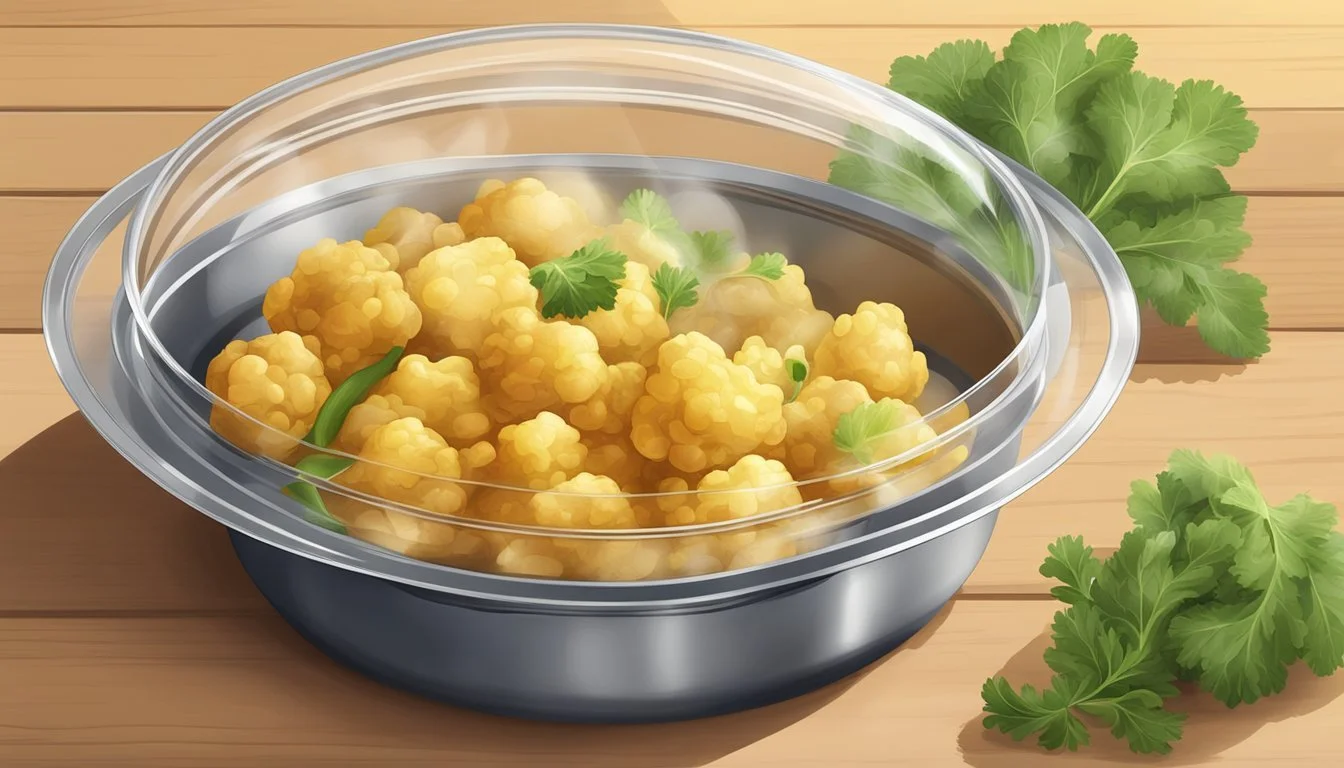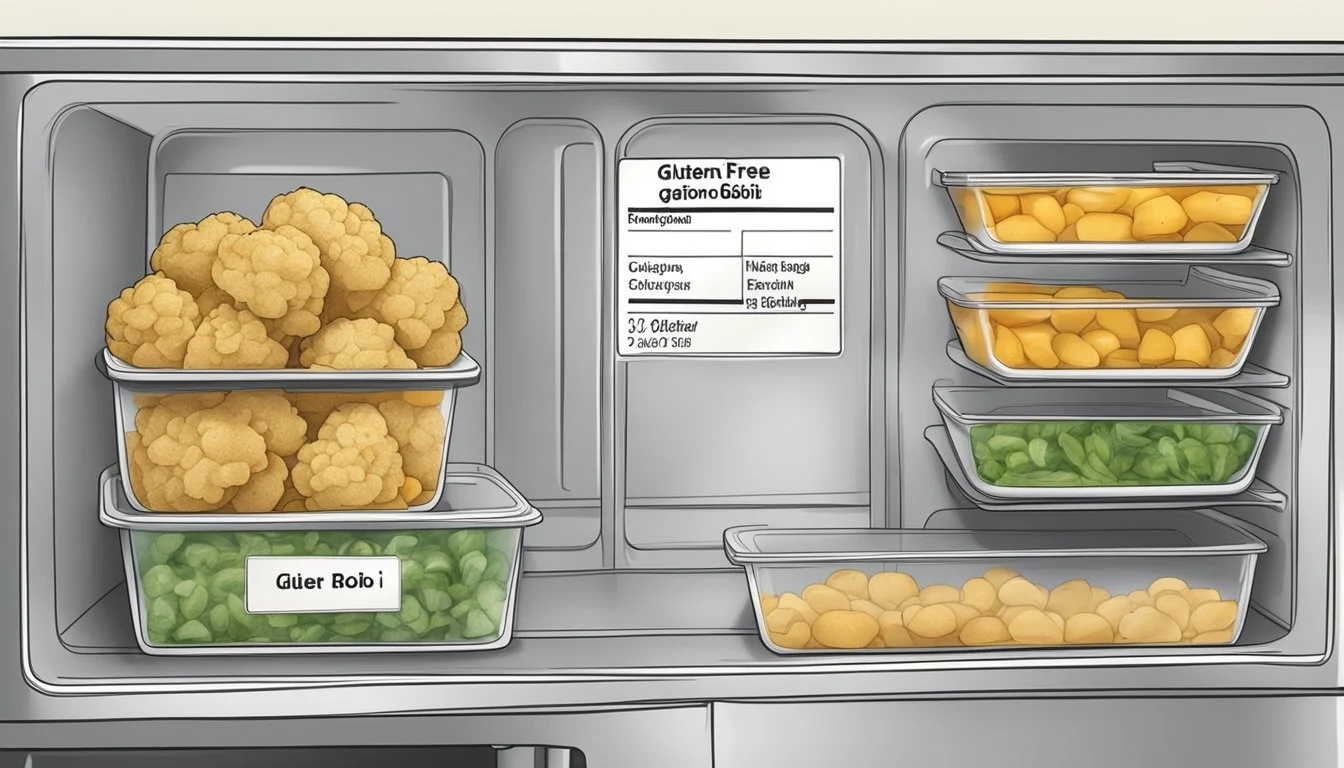How Long Does Gluten-Free Aloo Gobi Last?
Storage Tips
With its delicious blend of potatoes and cauliflower cooked to perfection, Aloo Gobi is a beloved vegetarian and vegan-friendly Indian dish. The gluten-free version of this recipe ensures that those with dietary restrictions can enjoy its rich flavors without worry. When stored properly in an airtight container in the refrigerator, gluten-free Aloo Gobi can last for up to 4-5 days, making it a convenient option for meal prepping or enjoying leftovers throughout the week.
For optimal freshness and taste, it is important to allow the dish to cool to room temperature before refrigerating. This prevents excess moisture from forming, which can detract from the dish’s texture. Reheating can be done on the stovetop or in the microwave, but care should be taken to avoid overcooking the vegetables, as this can cause them to become mushy.
Additionally, freezing gluten-free Aloo Gobi can extend its shelf life even further. Portioning the dish into single servings before freezing ensures that you can enjoy a quick, nutritious meal anytime. Properly stored in the freezer, Aloo Gobi can last for up to three months while maintaining its flavor and nutritional value.
Understanding Aloo Gobi
Aloo Gobi is a popular Indian dish made from potatoes and cauliflower, seasoned with a variety of flavorful spices. It's a versatile and nutritious meal enjoyed by both vegetarians and non-vegetarians alike.
Ingredients Profile
Aloo Gobi mainly includes potatoes and cauliflower as the primary ingredients. These vegetables are often combined with oil, usually vegetable or mustard oil, to begin the cooking process.
Common ingredients also include onions, garlic, and ginger, which are sautéed in the oil to create a fragrant base.
Other essential components are tomatoes and a mix of spices like cumin, turmeric, coriander, and garam masala. Cilantro and lemon juice are often added at the end for a fresh finish.
Nutritional Value
Aloo Gobi offers a balanced nutritional profile.
It provides a good amount of calories mainly from the carbohydrates in the potatoes, and protein from the combined vegetables, especially when cooked in oil.
It is rich in fiber, aiding digestion, and packed with vitamins such as Vitamin C, Vitamin A, and essential minerals like iron, calcium, and potassium.
Although it has a moderate amount of fat due to the cooking oil, it accommodates a broad range of dietary needs. Its sodium content varies depending on the amount of added salt.
Cultural Significance
Aloo Gobi holds a special place in Indian cuisine, particularly in the Punjab region.
Its combination of traditional flavors and Indian spices exemplifies everyday Indian cooking. This dish is commonly featured in many Indian restaurants worldwide, showcasing the richness of Indian culinary heritage.
It represents the use of simple, readily available vegetables, and is often prepared in homes for everyday meals or special occasions. Its vibrant flavors and satisfying nature make it a beloved dish in Indian households.
Preparing Gluten-Free Aloo Gobi
To prepare gluten-free aloo gobi, selecting quality ingredients and using proper cooking techniques are key. This ensures a dish that is flavorful and meets dietary needs.
Choosing the Right Ingredients
When preparing gluten-free aloo gobi, it is important to select fresh, high-quality ingredients. Cauliflower florets should be firm and free of brown spots. For potatoes, varieties like Yukon Gold or Russet work best, offering the right texture after cooking. Roma tomatoes provide a rich and sweet flavor essential to the dish.
Fresh spices are vital to bring out the flavors, including cumin, turmeric, and coriander. Adding a bit of amchur (dried mango powder) can enhance the tanginess of the recipe. Always use sea salt for a purer taste. Consider using olive oil instead of other oils for a healthier option.
Cooking Techniques
Various cooking techniques can be employed to make gluten-free aloo gobi. Frying the potatoes and cauliflower initially in a saute pan helps them develop a nice crust. Afterward, you can choose to either fry, boil, or simmer them in the spices and tomatoes.
For a crispier option, you can opt to cook the vegetables in the oven. Place them on a sheet and broil on high for 8-10 minutes until golden. Alternatively, using an Instant Pot can save time by speeding up the cooking process. Stovetop methods require careful attention to prevent burning and ensure even cooking.
By following these techniques, you will create a simple yet flavorful gluten-free aloo gobi.
Storing and Preserving Aloo Gobi
Properly storing gluten-free aloo gobi can help maintain its flavor and texture, ensuring it stays fresh for longer periods. Attention to storage conditions, shelf life, and reheating methods are crucial for keeping this dish safe and delicious.
Optimal Storage Conditions
Use air-tight containers to store aloo gobi. This reduces exposure to moisture and air, which can spoil the dish.
Store the container in the refrigerator at a temperature between 35°F and 40°F (1.6°C and 4.4°C). Avoid leaving the dish out at room temperature for more than 2 hours to prevent bacterial growth. If freezing, divide into smaller portions, and use freezer-safe containers or bags.
Shelf Life Considerations
When stored in the refrigerator, gluten-free aloo gobi typically lasts 3 to 4 days. For longer preservation, freezing is an option. Frozen aloo gobi can maintain its quality for up to 3 months. Label containers with the storage date to keep track of freshness.
While preservatives are not usually added to homemade dishes, using fresh ingredients and proper storage techniques helps extend shelf life. Always check for signs of spoilage such as unpleasant odors or changes in texture.
Reheating Process
For best results, reheat aloo gobi on the stovetop. Place it in a pan over medium heat, adding a splash of water or broth to maintain moisture. Stir occasionally to ensure even heating.
Microwave reheating is convenient; place the dish in a microwave-safe container and cover it loosely. Heat in 30-second intervals, stirring between each, until hot.
To reheat in the oven, preheat to 350°F (175°C). Place aloo gobi in an oven-safe dish, cover with aluminum foil, and heat for about 15-20 minutes. These methods help retain the dish’s original texture and flavor.
Serving and Pairing Suggestions
Aloo Gobi, a popular Indian dish, pairs wonderfully with a variety of sides and beverages to enhance the dining experience. Serving it warm and fresh can accentuate its spices and flavors.
Complementary Sides
Rice: Jeera rice, with its cumin-infused aroma, complements the flavors of aloo gobi perfectly. The subtle spice in the rice does not overpower the dish, creating a balanced meal.
Indian flatbreads: Naan, roti, and parathas are all excellent choices. They help scoop up the aloo gobi, making each bite delightful.
Dal: A simple dal can add a protein component to the meal. Its creamy texture and mild flavors create a harmonious balance with the aloo gobi's spices.
Salads: A fresh cucumber and tomato salad, lightly dressed, adds a refreshing contrast to the warm and spiced aloo gobi.
Beverage Pairings
Chai: A warm, spice-infused chai can enhance the spiciness of aloo gobi while providing a comforting warmth.
Lassi: A cold, yogurt-based drink, like mango lassi or salted lassi, pairs excellently, offering a cooling effect against the dish's heat.
Herbed water: Mint or cumin-flavored water can cleanse the palate and improve digestion.
Aromatic teas: Light teas such as jasmine or green tea can provide a refreshing complement without overwhelming the dish's intricate flavors.






